|
Return
to Biology 1114 Index Page

Preview
Material for Exam 1 - Spring 2011
Print
the PDF version (no pictures, better printing)
Remember:
Use a #2 pencil to fill in the information on your NCS answer sheet. Put your O-Key Account Username in the boxes indicated for LAST NAME and darken the appropriate circles. Write your Name (Last, First) and “Star or No Star” in the space above the boxes containing your O-Key Account Username. Darken the (S or N) in the last column of the name circles. Enter the number 1111 and darken the corresponding circles in the first 4 columns of the “Student ID.” Failure to perform this correctly will incur a -10pt handling fee. Read all questions and answers carefully before choosing the single BEST response for each question. Feel free to ask the instructor for clarification.
 |
After a 10 year study, a group of Australian researchers reported last year that women older than 70 who eat more chocolate are less likely to develop heart problems. The researchers reviewed data collected from 1216 women who were 70-or-older and estimated how much and how often they ate chocolate. One-half of the women said they ate less than one serving of chocolate per week. The other half said they ate more than one serving per week. The researchers reported that the women who regularly ate at least one chocolate serving per week were 60 % less likely to be hospitalized or die from heart failure during the study period. Prior to undertaking this preliminary study, the researchers originally developed the hypothesis that “Chocolate consumption has a protective effect against heart disease among women older than 70.”
Heart muscle cells have a higher number of mitochondria per cell than do nerve cells. Heart muscle cells are the first cells acutely affected by heart disease because their supply of oxygen is impaired from blockage of the coronary arteries. However, even without oxygen, these heart muscle cells can still produce ATP.
|
You have two solutions of salt and water (A & B) differing in concentration. You place equal volume of each solution in two chambers of a beaker separated by a membrane that is permeable only to water (as shown on the figure to the left). After 3 hours, you notice that the level of solution B has risen (as shown on the figure to the right). |
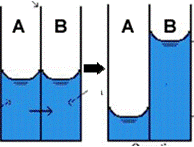 |
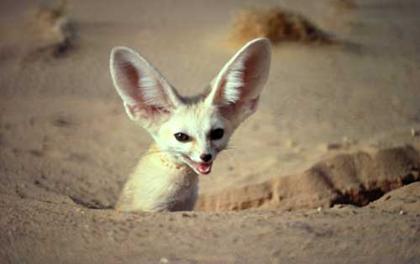 source source
|
Polly Jean wanted to test the hypothesis that being cold causes people to have weaker immune systems and thus catch diseases more often. She found 80 volunteers for her experiment. The design of her experiment was that 40 women would dress warmly by wearing a windproof jacket that was given to them and 40 men would not wear jackets. The experiment would last 3 weeks and each day she would record who was sick.
Polly Jean went out of town and her friend took care of her 15 pet mice. He was a terrible pet sitter and left five of the mice outside in a cage during a very hot day. They had water, but they were above their thermal neutral zone for too long and died. Five of the mice in another cage looked hungry, so he gave them some cassava root to eat. Unfortunately cassava root has high levels of cyanide, which prevents O2 from accepting electrons. The last five mice survived. Their respiration was working perfectly |
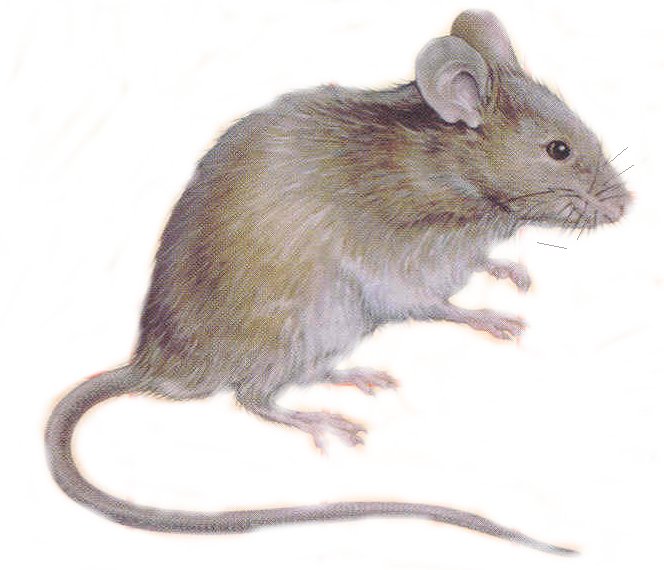 source source |
To test the side effects of the drug isosorbide dinitrate, a vasodilator, a mouse is placed in a container, the temperature of which is below the thermal neutral zone of the mouse. A thermometer is placed on the skin of the mouse and after 15 minutes, the mouse is given the drug. Before it was given the vasodilator, the mouse was urinating at a high rate causing it to dehydrate. |
|
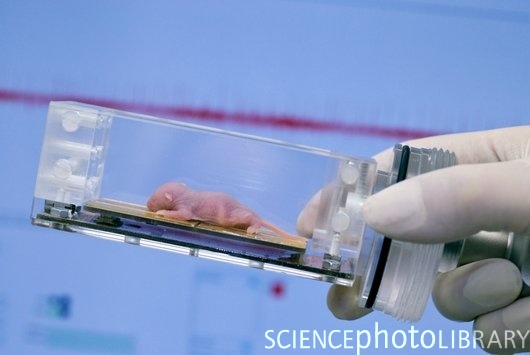 source source |
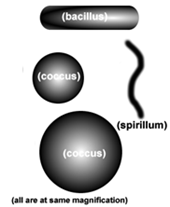 |
There are several basic shapes of bacteria. |
In spite of its name, the anteater normally eats more termites than ants. The giant anteater (Myrmecophaga tridactyla) of South America eats an average of 30,000 ants and termites per day. This anteater species may exceed 6 feet in length. Anteaters can flick their tongues up to 160 times or more per minute. Anteaters have no teeth. Their preliminary digestion is aided by the pebbles that they consume when they are eating their crunchy insect meal. Once the insects are attached to the anteater’s sticky saliva-covered tongue, they are crushed between the anteater's tongue and hard palate.
During a cool night in the rainforest, the ambient (environmental) temperature drops from 33oC (at sunset) to 23oC (at midnight). The anteater (internal body temperature = 37oC) finds a place to sleep, curls up, and covers itself with its bushy tail. The silky anteater (Cyclopes didactylus) is a native of warm, humid rainforests of Central America, and is about the size of a house cat (14 in. long), in contrast to the giant anteater (6 ft. long). |
|
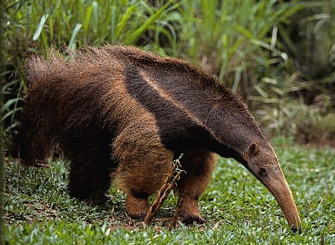 source source |
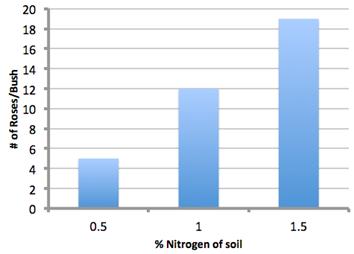 |
A graduate student in the Botany department was interested in understanding the factors that determine the number of flowers in a rose bush. She planted rose bushes in pots containing different concentrations of nitrogen fertilizer, and measured the number of roses per bush. Here is a graph of her data. |
|